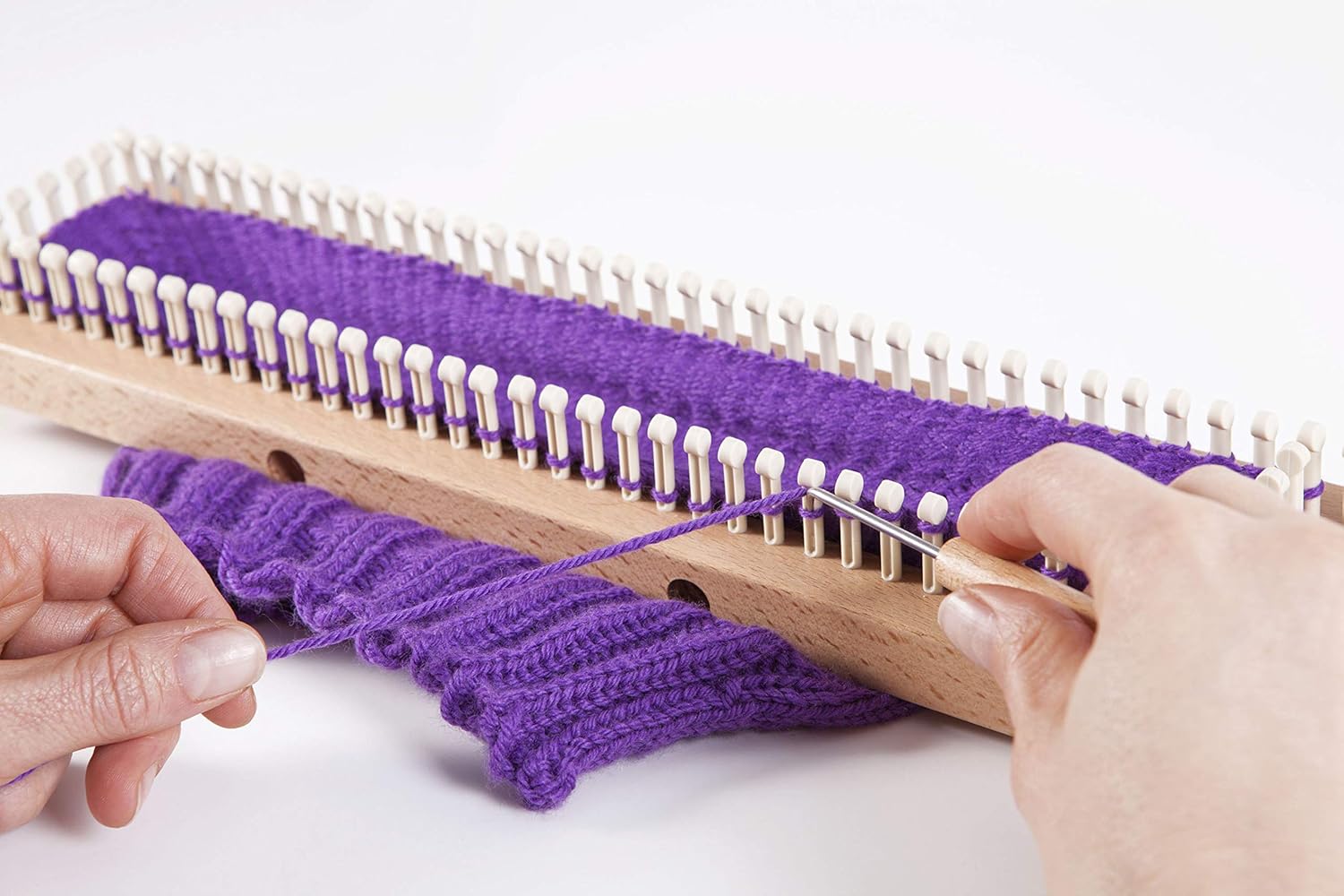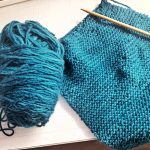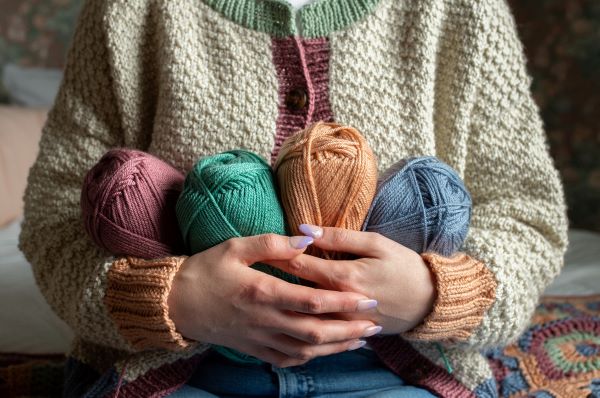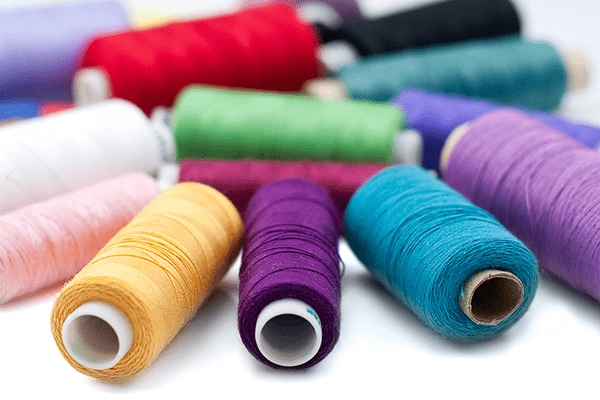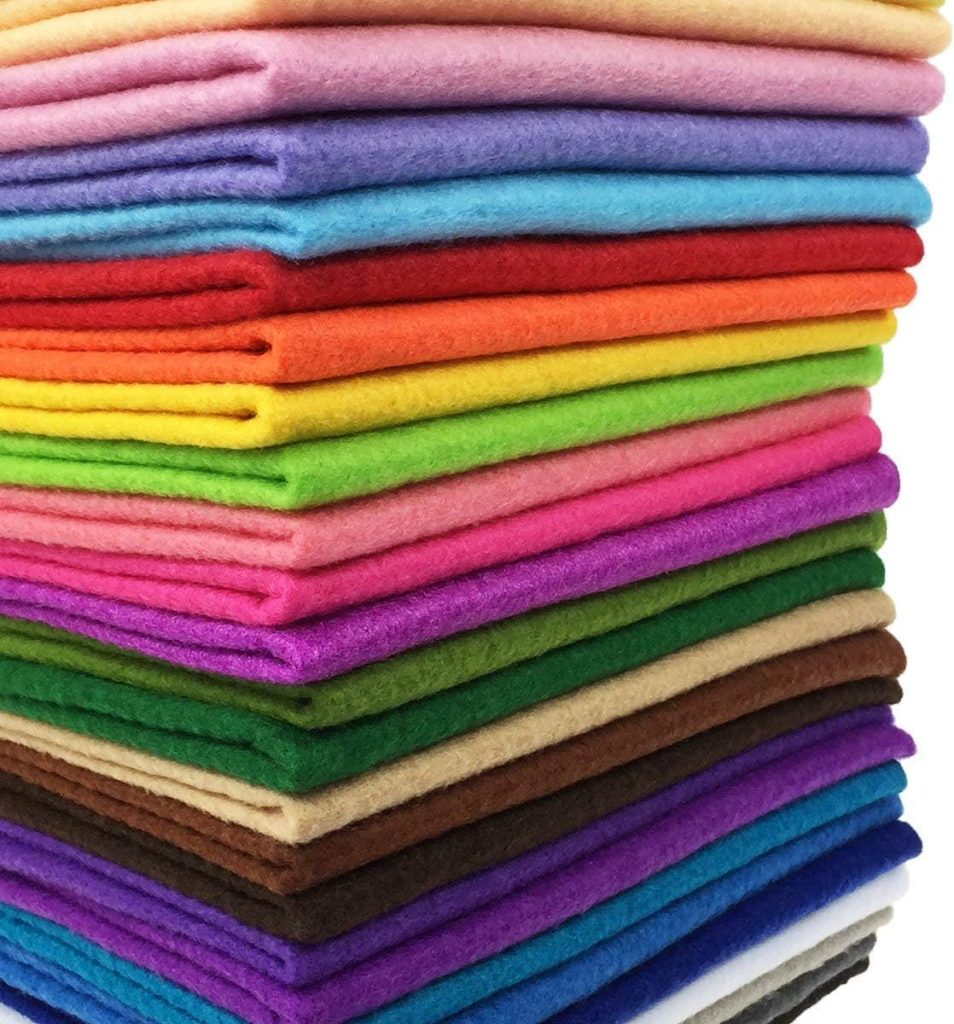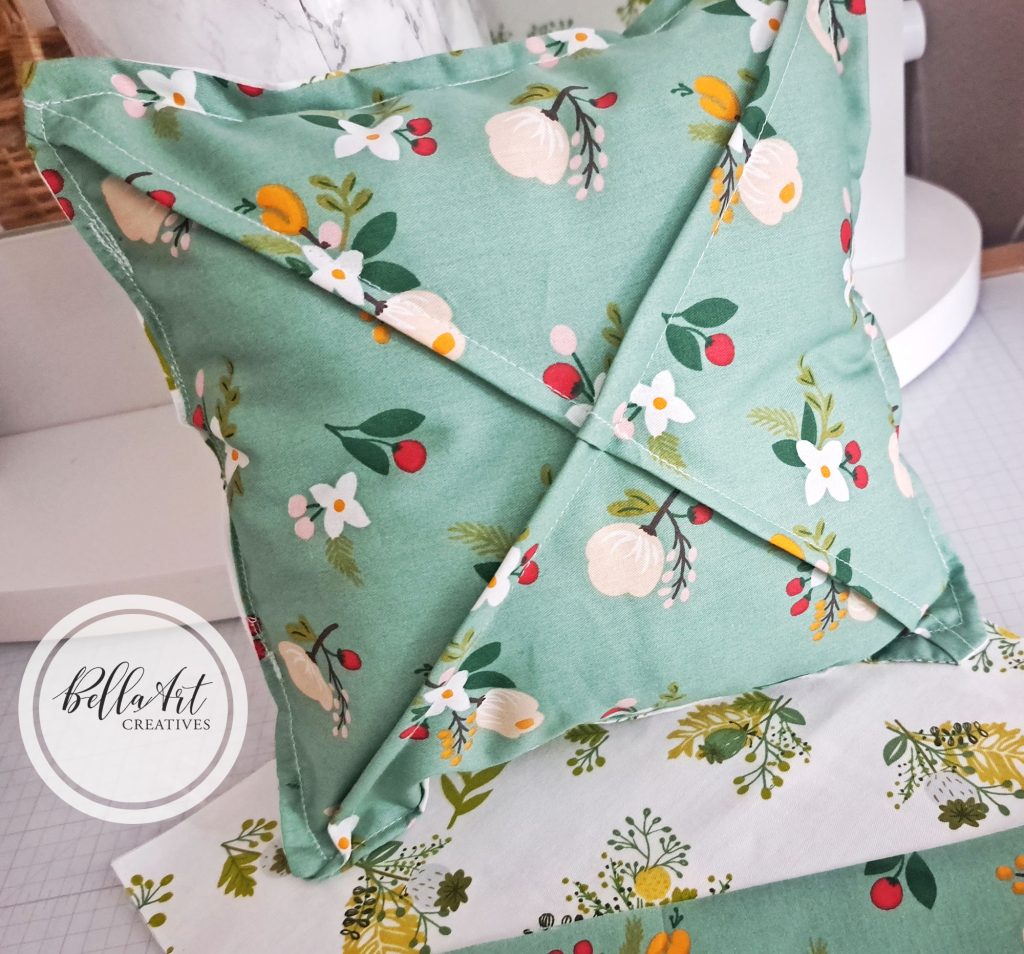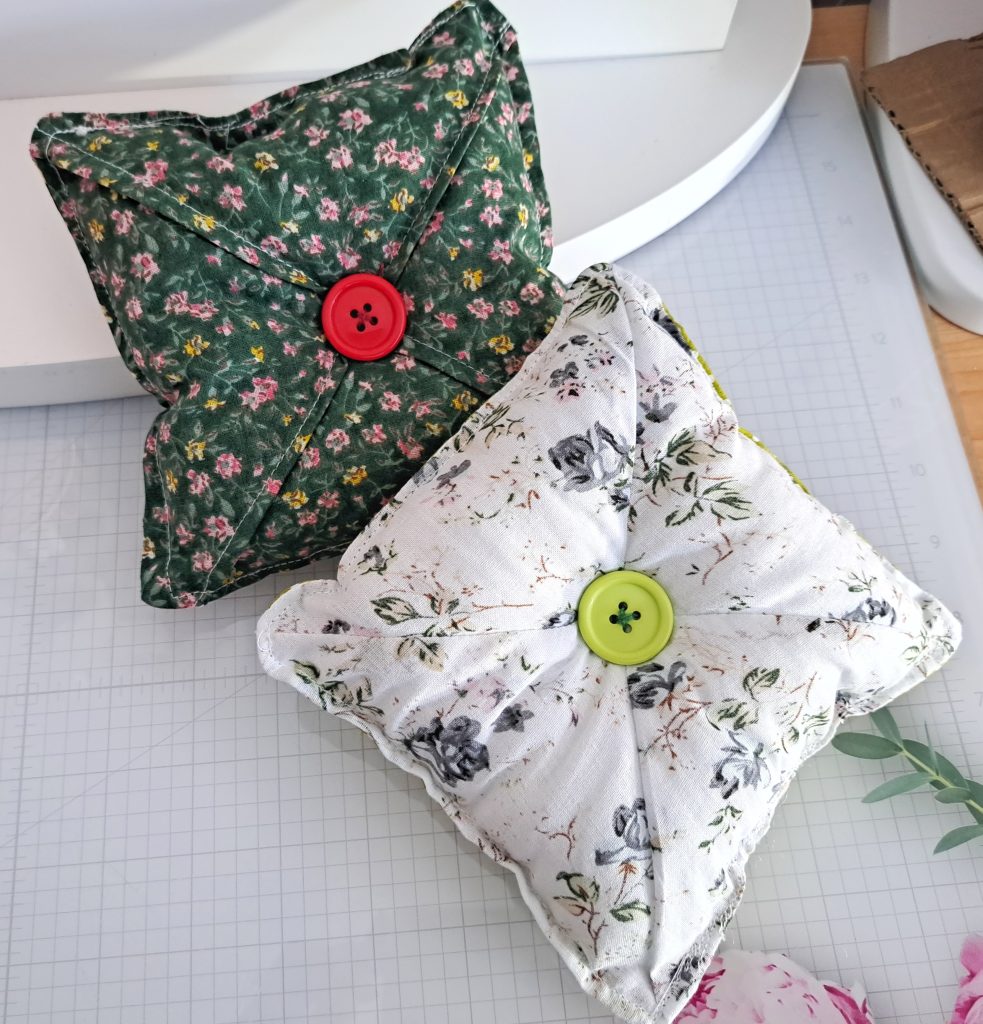Hi friends! Today I wanted to speak on a topic that I’ve kept silent about for a long time and it’s not to attack anyone’s ideals or opinions. This is something I’ve seen and heard in the industry and I wanted to give my take on the subject. You may feel differently than I do and that’s perfectly fine. I can politely agree to disagree.
The reason I want to give my opinion is because of how strongly I feel about creating anything with our hands. First of all, I think we all can agree that making handmade items does require some tools whether that is a paintbrush, crochet hook, camera or a die cutting machine. We need these machines and tools/notions to make our craft. Today, I want to discuss loom knitting vs. needle knitting.
When I wanted to learn to knit, I didn’t know where to start. I had been a crocheter for many years. One of the ladies in our Women’s ministry introduced us to loom knitting. She was making hats with it for our annual church bazaar. I was really intrigued by the loom so I purchased one and she taught me the basics.
Over time, I picked up more stitches and followed a few loom knitting Ytubers. This is where I heard a lot about traditional knitters criticizing loom knitters that the items they made on the loom isn’t truly knitting and worse, not even handmade. This disturbed me greatly.
I loved loom knitting. I used circular to rectangular to the S looms and made lovely hats, scarves and sold a bunch of my garments. For me, it was easier on my joints and it gave me an understanding of knitting terms and I truly believe it helped me eventually move to needles.
However, there are many loom knitters who choose not to knit with needles. Is that wrong? Absolutely not! We all have to make the right choices for ourselves when we craft. I’ve seen some beautiful garments, home decor pieces and accessories made with a knitting loom. Do I consider that real handmade? Yes, I do.
Why Loom Knitting is Just as Handmade as Traditional Knitting
Some crafters see loom knitting as more of a craft tool than a genuine art form. Loom knitting is a real craft that takes skill, patience and creativity. It’s not just a quick fix or machine-driven process. It’s a true handmade craft that I believe deserves recognition. You might be using the loom as the tool but you still have use a hook, you have to be able to read patterns, you pick the right yarn weight and it takes days even weeks to complete a project as with traditional needles.
Traditional knitting has a rich history rooted in cultural stories and community traditions. Loom knitting obviously hasn’t been around as long as needle knitting, however it’s a fun way to get your hands into the craft if you feel a little intimidated with needles. It doesn’t mean you’ll always loom knit, but it’s a great starting point!
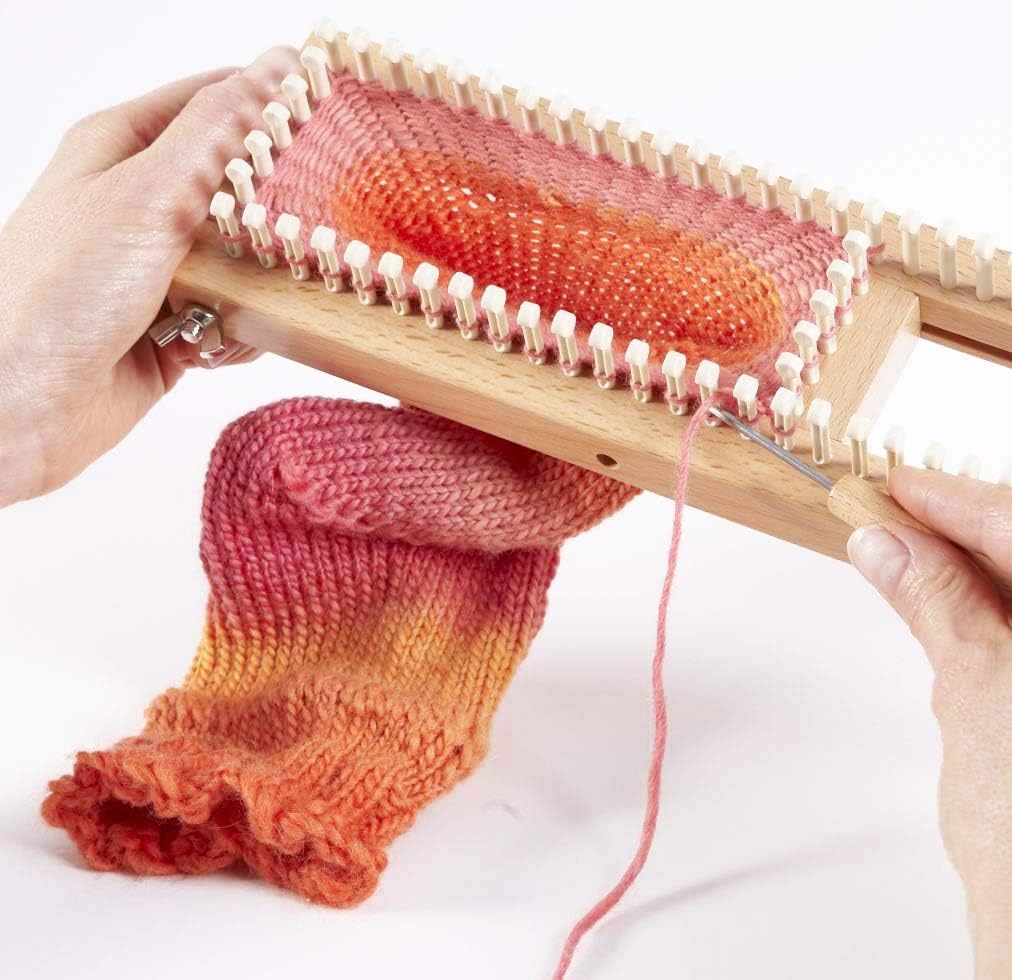
Understanding Traditional Knitting vs. Loom Knitting
The History and Cultural Significance of Traditional Knitting
Traditional knitting has been around for hundreds of years. It’s woven into the stories of many cultures, from Norwegians to Peruvians. Knitting was often a way to stay warm and build community. Each stitch was made with hand movements that required skill and patience.
The process involves selecting materials like wool, cotton, or silk, and then making each loop by hand. It can take many hours to produce a simple scarf or hat. The craft requires not just effort but also artistry, as knitters choose colors and patterns that reflect their style.
What is Loom Knitting?
Loom knitting is a modern version of hand knitting. Instead of multiple needles, a circular or rectangular loom is used. Yarn is wrapped around pegs or spokes, and then stitches are made by hand with a hook. It speeds up the process and allows for easier project-building.
Looms come in various sizes and types. Some are simple dowel-like tools, while others are more advanced with adjustable pegs. Many people turn to loom knitting to create everything from hats and scarves to intricate home decor. Its rise in popularity blends traditional techniques with modern convenience.
I used circular looms in all the sizes and rectangular looms for scarves to the S looms for garment making. It was easier on my hands and shoulders but it still took a lot of creativity and resilence to learn. Not all yarn weights work with all looms. I even upgraded my hook size to a larger size as it made loom knitting easier for me. Looms are also great for weaving, check out my Knitting lookbook to see pics of my weaved pillows made from the Martha Stewart knitting loom.
Key Differences and Similarities
While traditional and loom knitting work differently—one being more manual, the other mechanized—but they share core similarities. Both demand skill, patience, and a good eye for detail.
- Mechanical vs. Manual: Looms might seem mechanical, but they’re operated by human hands at every step.
- Skill Needed: Both crafts require talent to create tight, even stitches.
- Artistic Goals: Both methods produce beautiful, functional objects, from warm sweaters to decorative art pieces.
Loom knitting is not “less” handmade. It’s handmade made differently. Loom knitting doesn’t take anything away from traditional needle knitting and I don’t see loom knitting overtaking traditional knitting. Crafting is a big pie that everyone should be able to have a slice.
What Skills and Techniques are involved with Loom Knitting?
Loom knitting demands hand-eye coordination, tension control, and pattern reading. Advanced projects can be very detailed, incorporating complex patterns, textured stitches, and color work. For example, creating a rainbow-colored blanket or a fitted hat involves careful planning and skilled execution. Each stitch is made by hand, adjusting tension and technique to achieve the desired look. Tension is key in both knitting formats especially when making hats or socks. No one wants to wear a loosey goosey hat in the winter!
Artisanship and Personalization
One of loom knitting’s strengths is customization. You can choose any color, pattern, or texture. This personal touch makes every project unique. The artisan’s skill shines in the finishing touches and creative choices.
Loom knitters often add their personal style to every piece. No two projects are exactly alike. This makes loom knitting a true form of handmade art.
Real-World Examples of Handmade Loom Knitting
Many talented artisans and hobbyists have built careers around loom knitting. Some sell their work online, at craft fairs, or in boutiques. Their projects include handmade sweaters, decorative wall hangings, and even art installations.
In fashion, loom knit accessories and garments have gained recognition. Home decor items like chunky rugs or cozy throws showcase the craft’s versatility. These pieces are often highly detailed and made with care, proving the human effort behind them.
Addressing the “Not Handmade” Argument
Misconceptions About Mechanical vs. Handmade
Some argue loom knitting is “machine-made” because of the tool involved. But this isn’t true. Every stitch is still made by hand, even if the tool speeds up the process. The act of wrapping yarn and looping it around pegs requires manual effort and decision-making.
Loom knitting involves ongoing skill—picking the right tension, following patterns, finishing edges. It’s not simply pushing a button or using a machine; it’s a craft.
The Role of Creativity and Skill
Loom knitting isn’t just about following a pattern. It’s about designing, experimenting with textures, and creating something beautiful. It requires the same artistic vision as traditional knitting.
A loom knitter chooses colors, alters tension, and finishes projects with care. Each piece reflects the maker’s personal touch and skill level.
Expert Opinions and Industry Perspectives
Many respected knitters and fiber arts organizations recognize loom knitting as a legitimate form of handmade craft. They highlight its craftsmanship, artistry, and contribution to the textile arts. No longer just a beginner or hobbyist’s tool, loom knitting is gaining respect among professionals.
The Value and Recognition of Loom Knitting as a Handmade Art
Economic and Cultural Recognition
Loom knitting communities are growing worldwide. From small local markets to online shops, artisans sell their handmade loom projects for fair prices. It’s a thriving craft with real cultural value.
Craft groups and fiber arts organizations now see loom knitting as an important part of the handmade movement. Its recognition helps preserve and evolve traditional skills.
Educational and Community Initiatives
Workshops and classes about loom knitting are popping up everywhere. Online tutorials make it easy for beginners to learn. Community projects, like blanket drives or charity sales, show how loom knitting binds people together through handmade art.
Tips for Aspiring Loom Knitters
- Use quality yarn and a sturdy loom.
- Practice basic stitches, then experiment with patterns.
- Share your work online or at craft fairs.
- Keep refining your skills and add your personal style.
- Remember, each handmade project is a reflection of your effort and creativity.
In Conclusion
Loom knitting is a craft that requires skill, patience, and artistry—just like traditional knitting. Its history, techniques, and community effort prove it’s a true handmade art. Every stitch made on a loom is a mark of craftsmanship, not just a mechanical process.
I believe loom knitting deserves recognition as a legitimate form of handmade artistry. So, next time someone dismisses it as “not real” knitting, remind them that human effort, creativity, and skill stand behind every project. Celebrate loom knitting as a vibrant part of the handmade world, and support artisans who bring gorgeous, handcrafted pieces to life.
Loom Knitters to Follow on YouTube:
- Loom-a-Hat. She is one of the first YTubers in loom knitting that I followed. She amazed me at all the items she made with looms with simple to complex stitches. You’ll find beautiful scarves, hats and even toys on her channel.
- Good Knit Kisses. She is both a loom knitter and a traditional knitter and her channel features a ton of video tutorials on loom knitting. She has videos teaching different stitches and tutorials where she makes finished projects.
- Tuteate. She is a Spanish loom knitter and even though her English video tutorials gives instructions are in text rather than voice, it is still very easy to follow her instructions and she makes some beautiful things. She does have videos in Spanish as well on her channel. She’s even written a book, “Learn & Enjoy Loom Knitting, Volume 1“.
Shop Knitting Looms & Notions
Some of the links to the products I used are affiliate links which means that when you shop with them, I’ll receive a small commission at no extra cost to you. Your support helps me run my small crafty business. Thank you so much!

